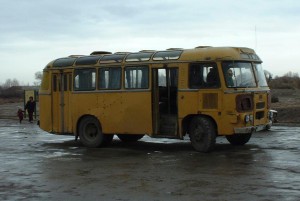This is an unusual post for me. It’s old, first of all – I wrote it in my personal journal, on actual paper, about six years ago, while on a work trip to a country I’m not going to name here. It’s moodier than I tend to be now. And it kind of reminds me of something that would be on Tales from the Hood, not Blood and Milk. But I still agree with it, so I thought I’d post.
In Uzbekistan I never really felt like taking pictures when I drove through rural areas. Uzbek villages are made of corrugated pre-fab boxes, no matter how small they here. The houses and barns all look the same, too, with their pale cement walls. This isn’t like that. Houses and barns are different shapes and sizes and materials and colors. And, as I looked at them, I realized why.
Here, it’s poor. Considerably poorer than Uzbekistan. That’s why there are thatched roofs and unusual buildings, why you can see cows grazing next to lean-to’s and buildings painted thirteen different colors.
And the poverty makes for great photography. Poverty has texture. Clean modern buildings give you a feeling of smoothness – they’re bland and unremarkable and rarely worth the film. The homes of the poor have none of that. Each one is unique, based on what people could afford and what they could find. They’re full of color, they’re rough, and there is nothing bland about them.
In other words, a good synonym for picturesque is desperate.
Aesthetics are seductive. It is hard not to like something because it’s pretty. That can lead you all sorts of terrible places; it can lead you to mistake tragedy for authenticity. It can make you think there is some value to authenticity when people are starving. It can lead you to take gorgeous pictures of the countryside without ever realizing that you are documenting a quiet horror.


